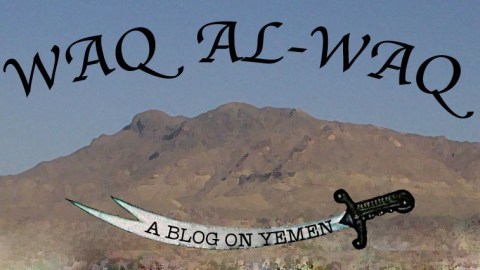Signature Strikes in Yemen

Yesterday I teased an upcoming post about the US approach to disrupting and defeating AQAP. Shortly after that Greg Miller – a smart and well connected journalist at the Washington Post – released this piece on the CIA seeking to use “signature strikes” in Yemen.
There are several things to say about this, but my first reaction was: isn’t the US already doing this in Yemen?
After Ali Abdullah Salih signed the GCC deal in November 2011 the US strategy for defeating AQAP in Yemen was described to me as seeking to kill the group’s top leaders in the hopes that these “decapitation strikes” would weaken AQAP to the point that it couldn’t launch attacks at the US. This is the two-pronged strategy that Eric Schmitt of the NY Times writes about here.
However, in recent weeks – at least from the outside – the US appears to have abandoned this approach or, at the very least, incorporated it with something looking very much like “signature strikes.”
There have been several missile strikes on militants traveling in cars recently and while these are sometimes referred to as being carried out by the Yemeni Air Force, most – including myself – believe they are actually US strikes.
There are several reasons for this. First, Yemen has a history of lying to its parliament and press over the strikes and second, Yemen’s Air Force has been entangled in a low-level mutiny for the past several weeks as a Salih appointee and relative refuses to surrender his command and large portions of his men refuse to serve. Plus, even when Yemen’s Air Force was operating at full strength, say, back during the Huthi conflict, it often couldn’t hit the correct targets or even keeps its planes aloft for any extended period of time.
All of this leads me to believe that the US is indeed already carrying out “signature strikes” or something an awful lot like them – none of the militants killed in the recent strikes have been “top” leaders in AQAP.
Miller points out in his story that: “the agency killed more senior al-Qaeda operatives there with signature strikes than with those in which it had identified and located someone on its kill list.”
I’m sure the CIA would also find this to be true in Yemen – it would almost without doubt kill more members of AQAP with signature strikes than it would without them. But – and this is the key question – at what cost?
I’ve mentioned several time – when I have to reduce myself to a sound bite – that body bags are not a good barometer for success in a war like this. The US has defeated al-Qaeda in Yemen before, killing its leader and destroying its infrastructure and yet the group came back stronger than ever. Indeed, since 2009 the US has killed several AQAP figures and yet the group appears to be stronger than ever. This, of course, begs the question: why?
I would argue that US missile strike are actually one of the major – not the only, but a major – factor in AQAP’s growing strength. Both Jeremy Scahill and Michelle Shephard have documented how US bombing mistakes in Yemen have played into AQAP’s hands.
Miller writes: “Securing permission to use these “signature strikes” would allow the agency to hit targets based solely on intelligence indicating patterns of suspicious behavior, such as imagery showing militants gathering at known al-Qaeda compounds or unloading explosives.“
And this is where I have serious problem.
What the US “knows” about Yemen often turns out to be untrue. For instance the December 17, 2009 strike that targeted an AQAP training camp turned out be a bedouin encampment that killed more than 40 civilians and the pictures of mangled corpses of women and children next to missiles with “Made in the USA” stenciled on them has been a recruiting coup for AQAP.
In May, 2010 the US targeted Aidh al-Shabwani only to hit and killed Jabir al-Shabwani, the deputy governor of Marib.
In October 2011 the US targeted Ibrahim al-Banna, an Egyptian member of AQAP, but instead it hit a campfire that killed Abd al-Rahman al-Awlaki, a 16-year-old American citizen as well as several other individuals but not al-Banna who doesn’t appear to have been present.
This is not a great record. Certainly some of the strikes will kill AQAP members, I’m not disputing that. But if the US creates more terrorists than it kills – and this appears to be what is happening – then how can it ever hope to win the war in Yemen?
US military planners are often concerned – and rightly – about the threats that they know. But in Yemen they seem to have a blind spot and an almost willing suspension of disbelief that there could be other, more important terrorists that they know nothing about.
For instance in the February 2006 prison break – AQAP’s re-birth in Yemen – the US focused on Jabir al-Banna and Jamal al-Badawi. The two terrorists it knew both of whom were on the FBI’s most wanted list, but it ignored Nasir al-Wihayshi and Qasim al-Raymi the two escapees from that prison break who turned out to be the most important for AQAP.
Finally, this can’t just be about killing bad guys in Yemen. The AQAP that exists today is not the one that existed in 2009 or 2010. The organization is now providing services and attempting to govern in parts of at least governorates. From the outside these attempts can seem amateurish and almost laughable – but the people AQAP is attempting to convince aren’t on the outside.
They are the people who have seen almost no government for decades. In parts of Abyan and Shabwa they have been neglected and ignored first by the socialists and then by Ali Abdullah Salih. No water, no electricity, no teachers for their children. AQAP is trying to provide these things for the first time -and remember AQAP doesn’t have to be great at this it just has to try, which is more than the Socialists or Salih ever did.
And so now, when the US kills these AQAP members it is not just killing bad guys it is removing men who have provided services to citizens in Abyan and Shabwa. Killing these guys is only a job half-done. If the US and Yemeni governments can’t provide a positive alternative – something it hasn’t been able to do in years of trying – the problem is only going to get worse. And by the US expanding the war it could easily find itself in a war it can’t kill its way out of. Not everyone in Yemen who has a beard and a gun and talks about Islamic law is a member of al-Qaeda.
Let me leave you with the question I’ve been asking myself and anyone in the US government I can get to listen to me – which isn’t many these days: Why, if the US has been carrying out strikes in Yemen since December 2009 does AQAP keep getting stronger?





